It's June, and you know what that means! Here at ONE National Gay & Lesbian Archives, LGBT Pride Month holds a special place in our hearts, as it's the time when we all commemorate the LGBT community collectively declaring, "I'm as mad as hell, and I'm not going to take it anymore!" In honor of LGBT Pride Month, we wanted to take a little walk down LGBT history lane to explore the origins of Pride, and take a closer look at those electrifying evenings in June when the LGBT community decided to stop hiding and start fighting.
The Good Fight Had Already Begun
It is a common misconception that the Stonewall riots mark the first time the LGBT community began fighting for their civil rights. In reality, early "homophile" organizations had been organizing for years prior to Stonewall. Groups like the Mattachine Society, Daughters of Bilitis, and ONE Inc. were operating in a handful of cities, raising awareness about employment discrimination, homophobic laws, police brutality, and other issues the LGBT community was up against during that time.
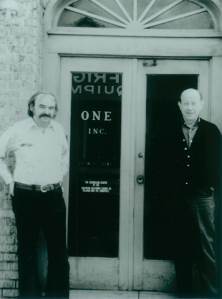
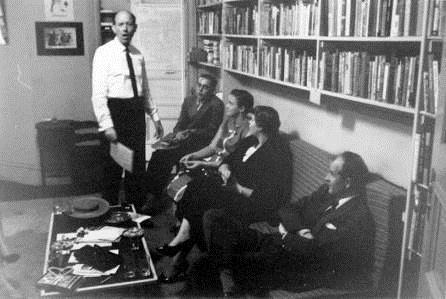
During the 1960s, activists were picketing in various locations with moderate success, including the Annual Reminders every July 4 at Independence Hall in Philadelphia, pickets in front of the White House, and civil demonstrations like the one at the Black Cat Tavern in Los Angeles to protest a police raid of the bar a few days before.
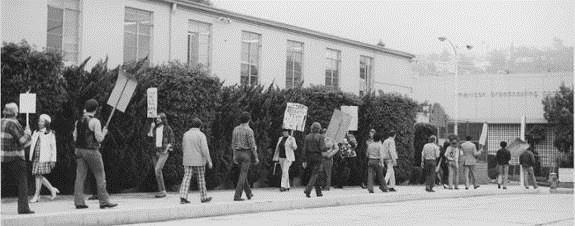
For the most part, pre-Stonewall activism tended to be fairly regional and was made up of several independent fledgling cells of a not-yet-born national LGBT civil rights movement, a movement that still lacked a collective power large enough to draw its foot solders out of hiding and onto the streets.
Then Came Stonewall
It isn't nice to block the doorway.
It isn't nice to go to jail.
There are nicer ways to do it,
But the nice ways always fail.
--Joan Baez
It has been said that during the turbulent '60s, gay bars were to LGBT people as churches were to African Americans in the South. They were temporary refuges, sanctuaries where one could find a brief respite from the stifling homophobic heat of the outside world.
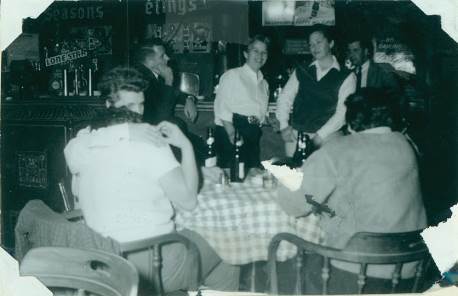
Everyday life for an LGBT person in the '50s and '60s included the very real threat of being strangled, shot, jailed, blackmailed, evicted, fired, excommunicated, forced to undergo electroshock therapy on your genitalia, or, if you were one of the unlucky ones, sent in for an analysis of your "sexual perversion" and a full frontal lobotomy.
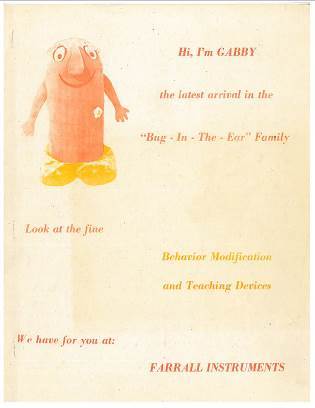
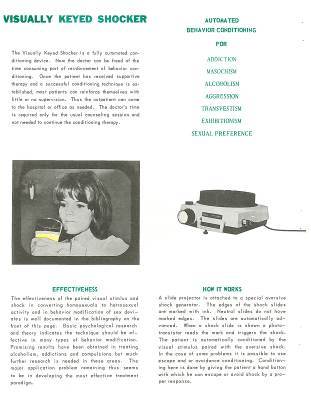
So that night when the police raided the Stonewall Inn, they got a lot more than they bargained for:
We were tired of being targets of manipulation and exploitation; tired of being maggot excuses for raids upon our assembly, tired of being someone else's scapegoat for some other reason. Tired of being threatened and harassed and entrapped and told what we were, what to do, and how to do it, when to do it, how to feel, what to say, how to be, what to be..ya can't be it outside, nor can you inside! We rioted because rich, or poor, young or old, we dared to be ourselves. We wanted to be ourselves, to be, to laugh and play in joy! We rioted to be gay.
--Christopher Street Liberation Day Committee member, 1974
A groundswell of deep systemic anger, defiance from a community on the edge of revolution, and the fervent freedom that comes with having nothing to lose came together to form the perfect storm that night. The fire had suddenly and spontaneously been lit, and a new national LGBT civil rights movement had been given a pulse.
The Stonewall riots changed the direction of the LGBT movement, taking it from several independently run nascent organizations sprinkled throughout the country to a full-fledged national social equality movement that people could identify with and organize around. Not wanting to lose the momentum gained from Stonewall, the newly empowered LGBT rights leaders in several different cities began mobilizing, trying to answer the question, "Now what?"
Pride Is Born
On Nov. 2, 1969, at the Eastern Regional Conference of Homophile Organizations (ERCHO) in Philadelphia, the first Pride march was proposed by way of a resolution. The "Christopher Street Liberation Day" march was then held in New York City on June 28, 1970, marking the first anniversary of the Stonewall riots with an assembly on Christopher Street and a march covering the 51 blocks to Central Park.
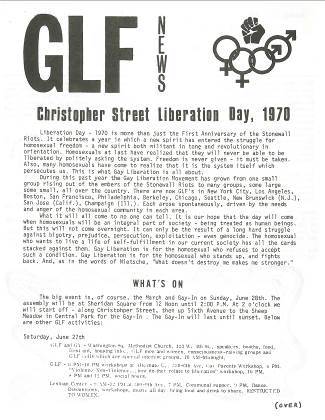
On that same weekend in 1970, three other U.S. cities -- Los Angeles, Chicago, and San Francisco -- also held what would be the first Pride events ever in U.S. history. Los Angeles is credited as having the first official city-sanctioned Pride parade (as opposed to a march), as it was the only event that had a permit for street closures and an actual parade route. In 1974, Los Angeles added the first-ever festival component, which is now a major part of Pride celebrations nationwide.
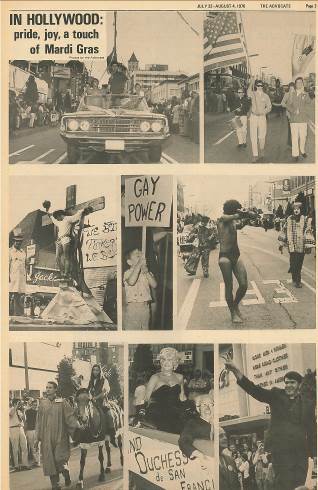
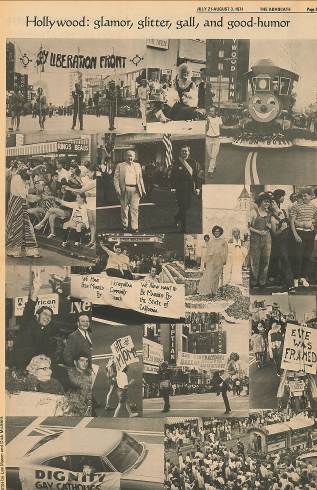
In 1970, walking in broad daylight with a sign saying you were a homosexual was not only terrifying but could prove deadly. Many of the marchers in those first Pride events were genuinely scared that they might not make it to the end of the route. They had no idea where they were going to finish, or if anyone would show up to march with them, or if they would even make it halfway down the street without being mobbed by an angry, violent crowd.
As the march began that first year in New York City, 10 people became 100, and then 100 people became 1,000, and by the time the march ended, there were thousands marching in solidarity for a world where loving someone of the same sex could be as American as apple pie.
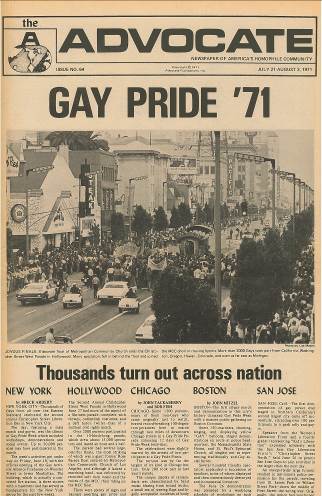
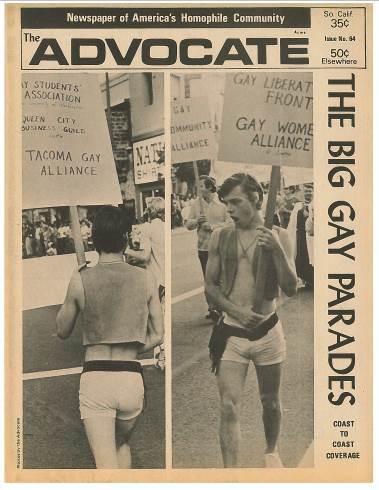
Here at ONE Archives, we think one of the best ways to celebrate LGBT National Pride Month is by taking pride in our past. This June, when you attend your own Pride celebrations across the country, take a moment to remember those early LGBT activists who bravely paved the way for us before and after Stonewall. They were willing to risk everything to defend our right to simply exist.
We stand on their shoulders today as we work toward full marriage equality, national federal employment protections, and putting an end to anti-LGBT violence, among many other rights and protections we are still seeking. Their legacy has now become our legacy. Let's take really good care of it and make them proud.
Freedom is never given -- it must be taken.
--Gay Liberation Front Newsletter, 1970
PHOTOS:
?
Follow Jamie Scot on Twitter: www.twitter.com/ONEarchives
"; var coords = [-5, -72]; // display fb-bubble FloatingPrompt.embed(this, html, undefined, 'top', {fp_intersects:1, timeout_remove:2000,ignore_arrow: true, width:236, add_xy:coords, class_name: 'clear-overlay'}); });
Source: http://www.huffingtonpost.com/jamie-scot/what-a-riot-taking-pride-in-our-past_b_3438497.html
apple ipad kony kony 2012 jim irsay the new ipad apple announcement indianapolis colts
No comments:
Post a Comment
Note: Only a member of this blog may post a comment.